Exposed limestone and winter foliage in my garden
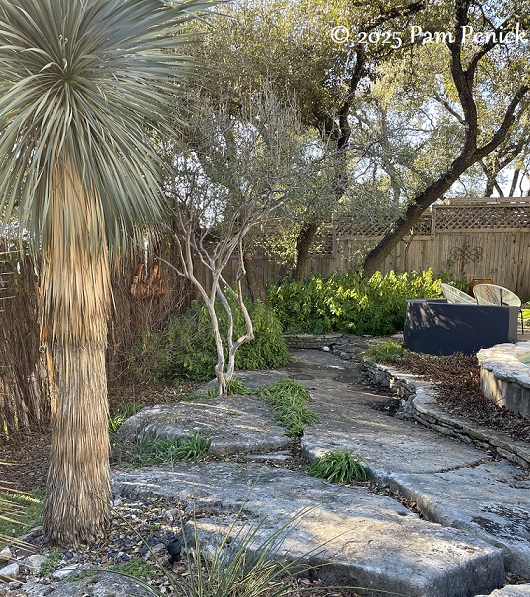
The exposed limestone slabs in the lower garden have always been one of the most remarked on features of my garden. New visitors often ask me if I brought them in. After all, moving limestone boulders around is a big part of landscape design here. We love our limestone in Central Texas, and that’s good because we have lots of it.
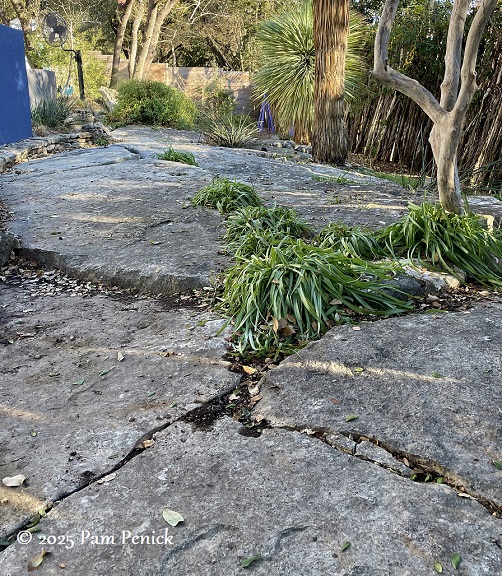
But no, this limestone was here when we moved in. My guess is, the rock was exposed when previous owners installed a pool and regraded the backyard. Or it was always exposed, and they worked around it. I like the exposed slabs and work to keep purple heart and widow’s tears from swallowing it. It’s a reminder of deep time, when all of Central Texas was under a shallow sea. We are a blip in history.
I find this notion comforting.
Spiderwort foliage sprawls from deep crevices in the stone like tentacled sea creatures. A Texas persimmon, long ago seeded into a crack, grows stubbornly in who knows how much soil. Tough plants.
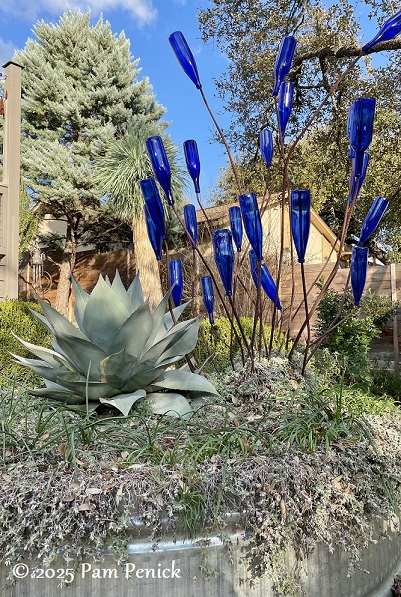
Winter is when my foliage plants really shine in all their silvery green or silvery blue glory, like whale’s tongue agave, beaked yucca, and ‘Blue Ice’ Arizona cypress. A rebar bottle shrub adds more blue.
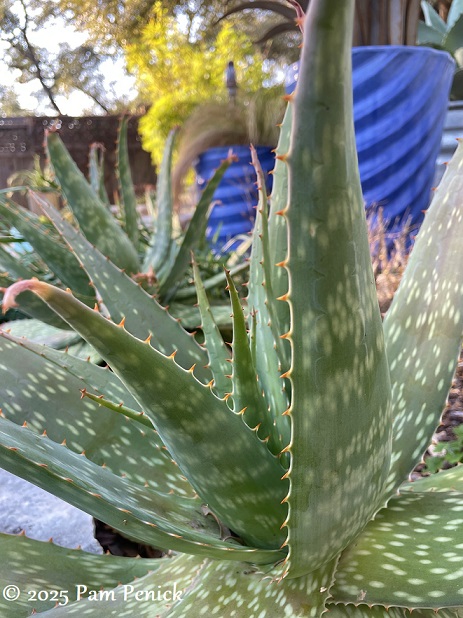
Soap aloes are looking good near the end of this relatively mild winter. Their speckled arms with orange teeth are beautiful all year long.
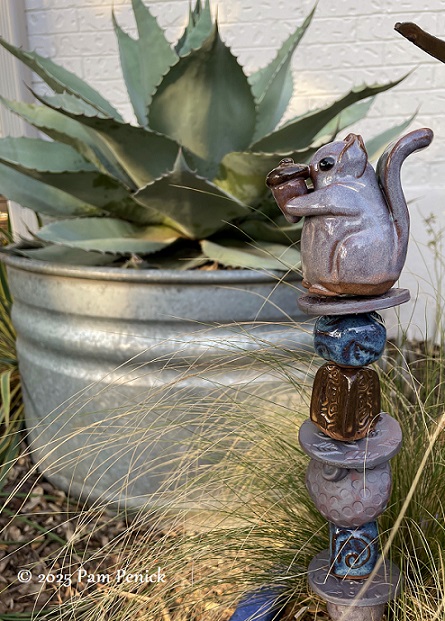
When in doubt, stick an agave or yucca in a container — that’s my philosophy. They add structure, winter interest, and almost never need watering.
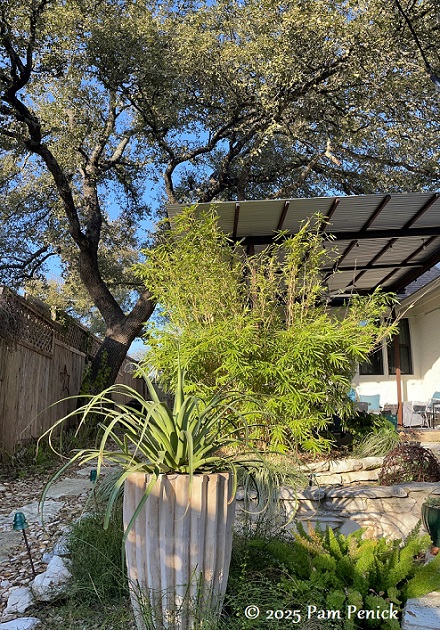
Case in point, this squid agave in a fluted pot. Squid agave has proven to be winter hardy, summer hardy, shade hardy, sun hardy, deer hardy, and rabbit hardy for me. Wherever I put one of these babies, it performs. The ‘Alphonse Karr’ bamboo behind it, on the other hand, is more of a trial. It dislikes our recent colder winters and requires much trimming. Sure, it helps to shade the patio from the afternoon sun, but man, I wish I’d thought of something else for that spot.
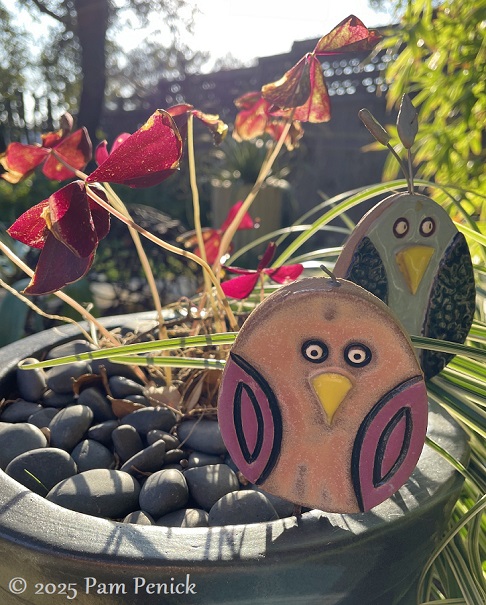
Two little ceramic birds perch in a pot of winter-weathered purple oxalis. It’ll be back up soon.
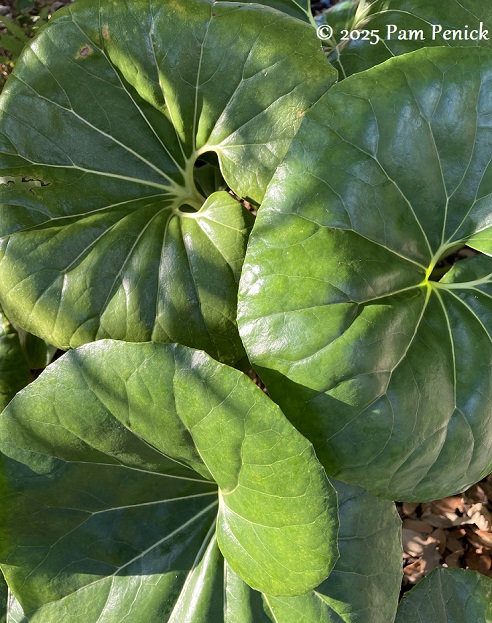
Giant leopard plant still looks fresh and green, despite overnight lows in the 20s in late December.
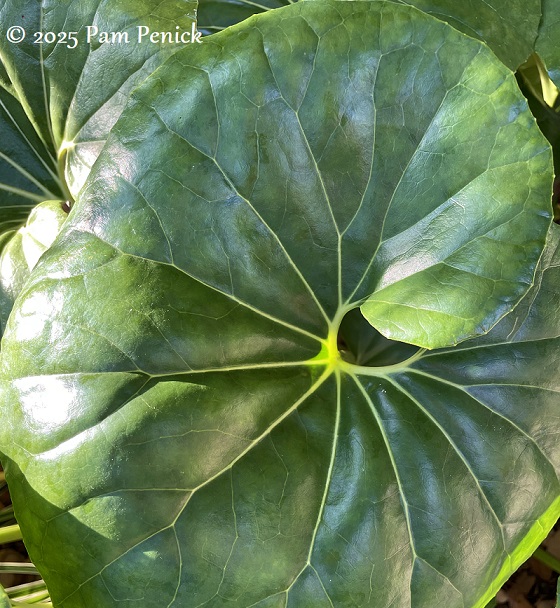
Their round, veined, glossy leaves give snail shell vibes.
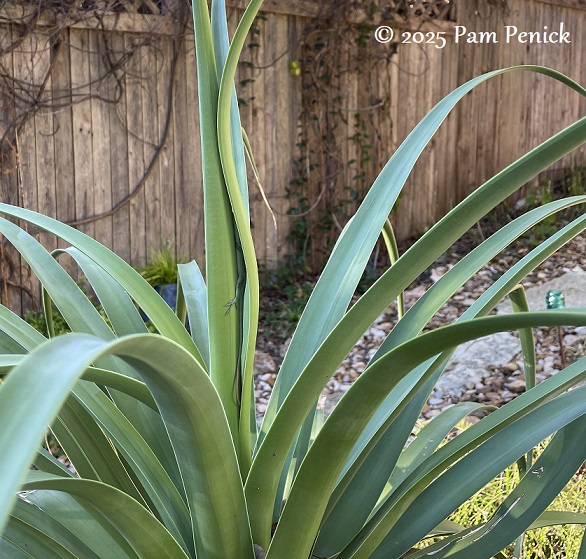
Passing by the squid agave again, I spotted someone hiding in the inner leaves.
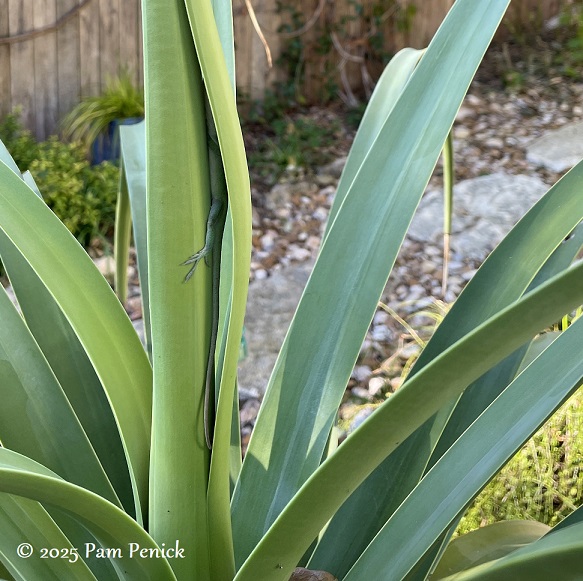
I see you.
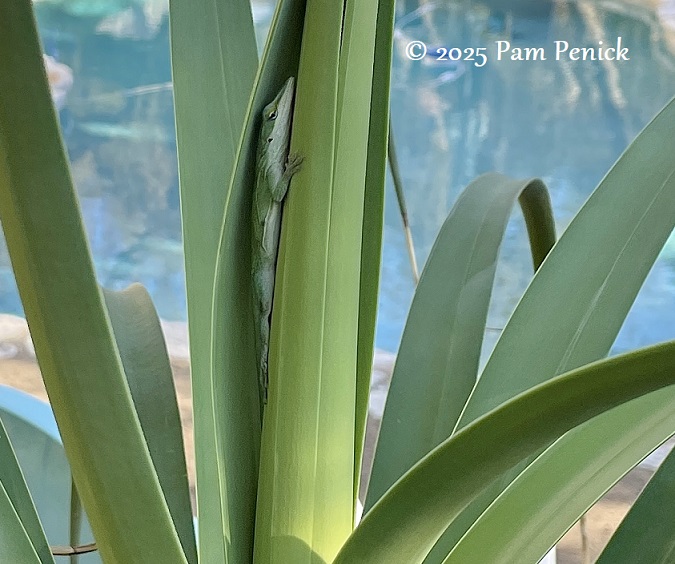
Hello, anole.
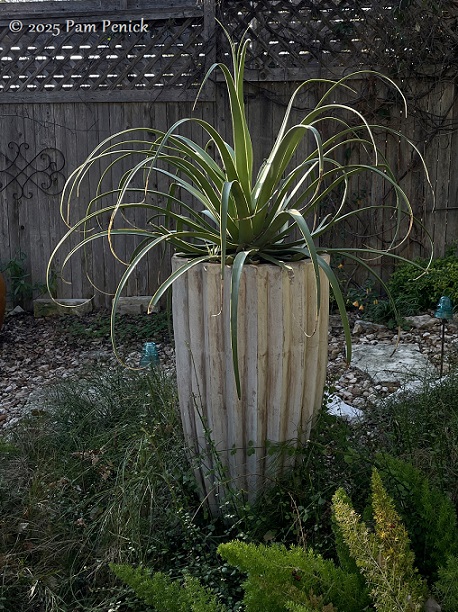
This squid is the queen of the garden each sunny afternoon, when light outlines her tentacled arms. A nod to the underwater world this place used to be.
I welcome your comments. Please scroll to the end of this post to leave one. If you’re reading in an email, click here to visit Digging and find the comment box at the end of each post. And hey, did someone forward this email to you, and you want to subscribe? Click here to get Digging delivered directly to your inbox!
__________________________
Digging Deeper
Attend the annual Budding Out Plant Sale & Festival on March 15th at the John Fairey Garden in Hempstead. Shop for rare plants from the garden’s nursery and select plant vendors. Local artists and artisans as well as food, drink, and demonstrations will also be featured. Admission: $5 for members, $10 for non-members, children under 12 free. Hours: 10 am to 4 pm; members get early admission at 9 am (memberships available on day of event).
Come learn about gardening and design at Garden Spark! I organize in-person talks by inspiring designers, landscape architects, authors, and gardeners a few times a year in Austin. These are limited-attendance events that sell out quickly, so join the Garden Spark email list to be notified in advance; simply click this link and ask to be added. Read all about the Season 8 lineup here!
All material © 2025 by Pam Penick for Digging. Unauthorized reproduction prohibited.


Love your aloes and agaves, Pam (envy, really). And the blue bottle tree. Hagerstown is an area of limestone too. There are several areas where it pokes out of the ground in my yard, but no beautiful slabs like yours (just obstacles to avoid with the mower). And any attempt to dig a hole anywhere results in the distinct “clunk” of the shovel hitting rock. We all have our many and varied garden challenges, huh?
I know that clunk sound well. Rock is definitely a challenge but can be an asset too. Thanks for your comment!
Your winter garden looks very peaceful, Impressive stone slabs. Pam! My entire neighborhood was a rock quarry up until the 1940s. Some of the rock is still here but of course most of that we find is mere rubble – palos verde stone can’t even be found for sale anymore.
I didn’t know that about your neighborhood, Kris – interesting! There are lots of former quarries in Austin. My grocery store is in one, in fact.
No limestone in my area. I live in a river valley. I have some clay and sandy areas in my garden. Love seeing all your spiky plants.
You must have delicious soil for many plants, Lisa. And there are always containers for little spiky plants!
That little lizard is just adorable! I love your garden limestone, it’s a remarkable feature. In my garden in Spokane I had a lot of exposed basalt, a tall rock wall on one side of the property and bits right at the surface throughout (no basement in that house!). I dream sometimes of what I could have done with that rock and enough money to really garden there.
Ooh, I’d have loved to see that basalt wall in your old garden. Sounds dramatic.
Beautifully written. We can’t take our little plots of land with us, we can only be stewards, and try to acknowledge the history that came before.
Thanks, Julie. Rock really provides that sense of history. Old trees too.
I love your exposed granite and wish my 400 million year old Ordovician bedrock was exposed. Loved this tour.
You know all about limestone, don’t you, Clay and Limestone? 🙂
DO you leave your Squid agave out all winter. I have Been hauling mine in and out for years. Tell me I don’t need to do it anymore
I am in north Bexar county.
Absolutely. You shouldn’t ever have to haul squid agave in and out for freezes in the San Antonio area. I leave all my big containers of them out — even during Snowpocalypse, and they all survived that except for two (I have many). That said, a little one that’s not well established may need protection, and agaves need good-draining soil to prevent rot during wet winters. But otherwise, yeah, you’re good to go!
One addendum: make sure we’re talking about the same plant, Agave bracteosa. There’s an octopus agave that’s similar (sort of) and NOT hardy in hard winters. And other kinds of agave may not be. But squids are Texas tough.
Your squid agave has inspired me. I will soon have one (or 3) of my own. Also, having boulder envy. My rocks are all in the fist-size range….too big to ignore, too small to use.
Hah! But I bet you come up with something good to do with them all the same. Another gabion wall?
The limestone is a great feature! Can you imagine the cost of having to bring that all in. I think we could all use Agave bracteosa in our garden! Your winter garden looks fantastic.
Thanks, Tracy! 🙂
Those limestone slabs are wonderful. Many would pay a fortune to have something like it installed!
The squid agave in a fluted pot: I’m sure I’ve marveled at this perfect match before, probably whenever you featured it in a post: it is an inspired combination. Thinking of it as a ‘nod’ to the shallow sea of the past is a wonderful thought, I love it.
Thanks, Chavli. I enjoy this particular squid immensely.
I bought a Giant Leopard Plant for my garden after I saw one in your garden. I was surprised it stayed green during recent freezes when I had not covered it. I love this plant !
It’s a good plant for shade, even dry shade, in Central Texas, although it’s not waterwise. I use them sparingly for that reason. But yes, they are very cold hardy. Mine stayed green through our earlier hard freezes, but they did collapse in last week’s freeze. Just cut off mushy foliage, and they’ll be right back up again soon!